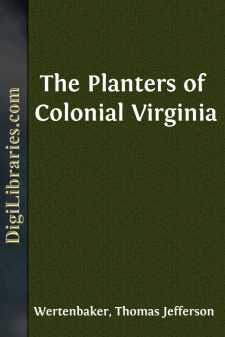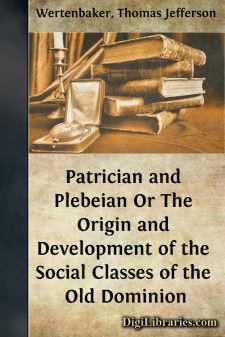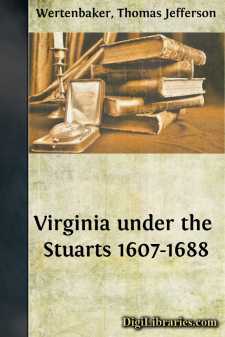Categories
- Antiques & Collectibles 13
- Architecture 36
- Art 48
- Bibles 22
- Biography & Autobiography 813
- Body, Mind & Spirit 142
- Business & Economics 28
- Children's Books 14
- Children's Fiction 11
- Computers 4
- Cooking 94
- Crafts & Hobbies 4
- Drama 346
- Education 46
- Family & Relationships 57
- Fiction 11828
- Games 19
- Gardening 17
- Health & Fitness 34
- History 1377
- House & Home 1
- Humor 147
- Juvenile Fiction 1873
- Juvenile Nonfiction 202
- Language Arts & Disciplines 88
- Law 16
- Literary Collections 686
- Literary Criticism 179
- Mathematics 13
- Medical 41
- Music 40
- Nature 179
- Non-Classifiable 1768
- Performing Arts 7
- Periodicals 1453
- Philosophy 64
- Photography 2
- Poetry 896
- Political Science 203
- Psychology 42
- Reference 154
- Religion 513
- Science 126
- Self-Help 84
- Social Science 81
- Sports & Recreation 34
- Study Aids 3
- Technology & Engineering 59
- Transportation 23
- Travel 463
- True Crime 29
The Planters of Colonial Virginia
Description:
Excerpt
PREFACE
America since the days of Captain John Smith has been the land of hope for multitudes in Europe. In many an humble home, perhaps in some English village, or an Ulster farm, or in the Rhine valley, one might find a family assembled for the reading of a letter from son, or brother, or friend, who had made the great venture of going to the New World. "Land is abundant here and cheap," the letter would state. "Wages are high, food is plentiful, farmers live better than lords. If one will work only five days a week one can live grandly."
In pamphlets intended to encourage immigration the opportunities for advancement were set forth in glowing colors. In Virginia alone, it was stated, in 1649, there were "of kine, oxen, bulls, calves, twenty thousand, large and good." When the traveller Welby came to America he was surprised to "see no misery, no disgusting army of paupers, not even beggars;" while Henry B. Fearson noted that laborers were "more erect in their posture, less careworn in their countenances" than those of Europe.
In Virginia, as in other colonies, it was the cheapness of land and the dearness of labor which gave the newcomer his chance to rise. The rich man might possess many thousands of acres, but they would profit him nothing unless he could find the labor to put them under cultivation. Indentured workers met his needs in part, but they were expensive, hard to acquire, and served for only four years. If he hired freemen he would have to pay wages which in England would have seemed fantastic.
Thus the so-called servants who had completed their terms and men who had come over as freemen found it easy to earn enough to buy small plantations of their own. That thousands did so is shown by the Rent Roll which is published as an appendix to this book. One has only to glance at it to see that the large plantations are vastly outnumbered by the small farms of the yeomen. It proves that Virginia at the beginning of the eighteenth century was not the land of huge estates, worked by servants and slaves, but of a numerous, prosperous middle class.
Owning plantations of from fifty to five hundred acres, cultivating their fields of tobacco, their patches of Indian corn and wheat, their vegetable gardens and orchards with their own labor or the labor of their sons, the yeomen enjoyed a sense of independence and dignity. It was their votes which determined the character of the Assembly, it was they who resisted most strongly all assaults upon the liberties of the people.
As the small farmer, after the day's work was over, sat before his cottage smoking his long clay pipe, he could reflect that for him the country had fulfilled its promise. The land around him was his own; his tobacco brought in enough for him to purchase clothes, farm implements, and household goods.
But he frowned as he thought of the slave ship which had come into the nearby river, and landed a group of Negroes who were all bought by his wealthy neighbors. If Virginia were flooded with slaves, would it not cheapen production and lower the price of tobacco?...






